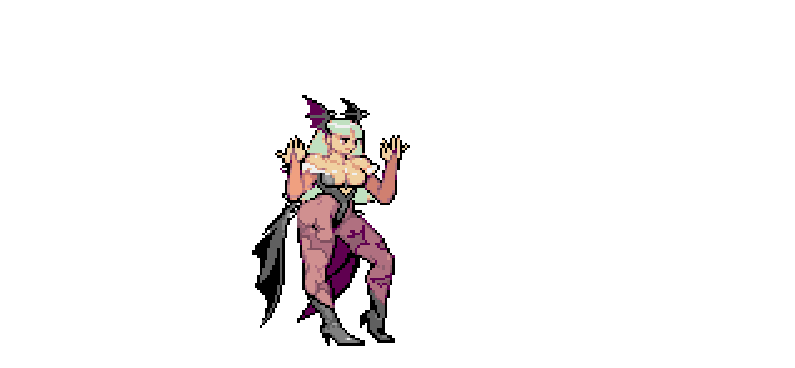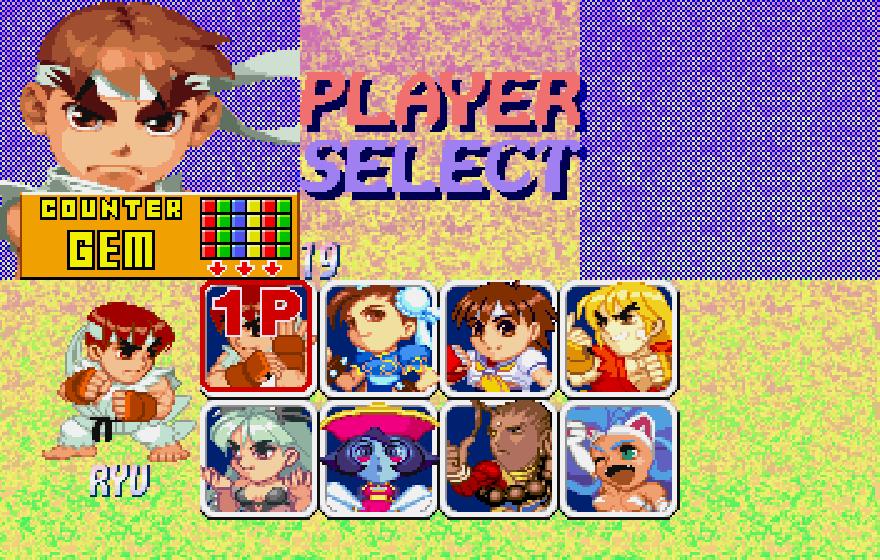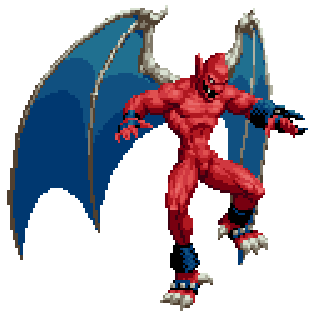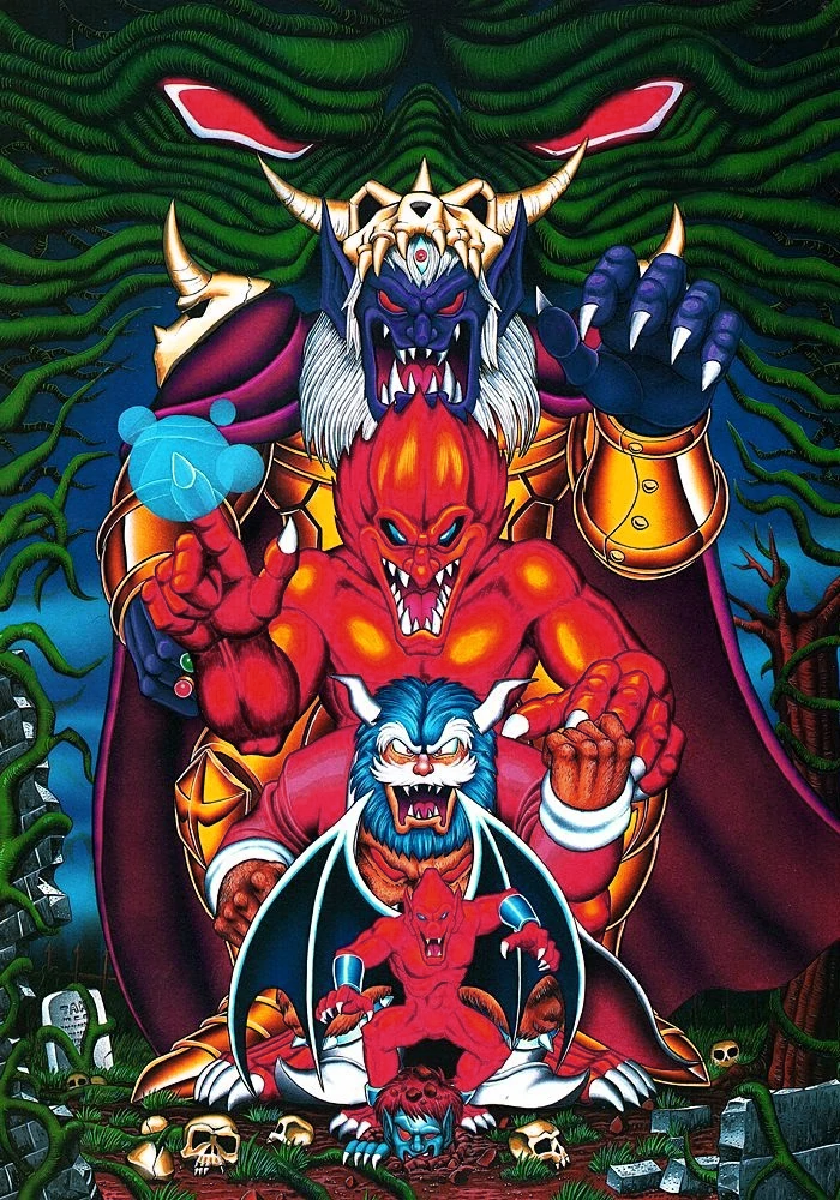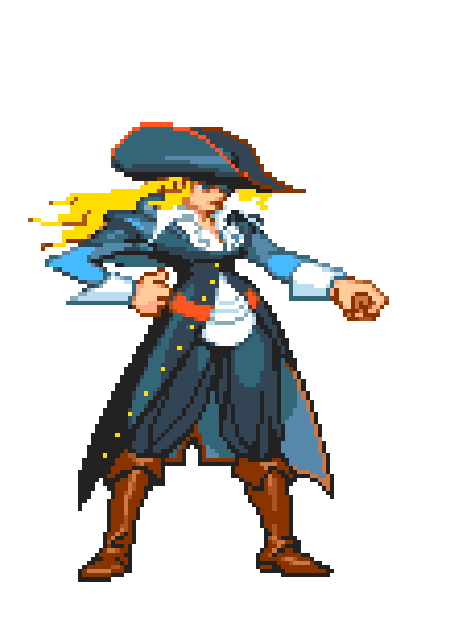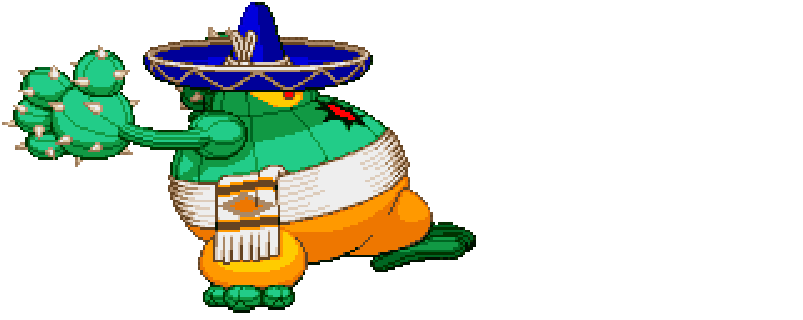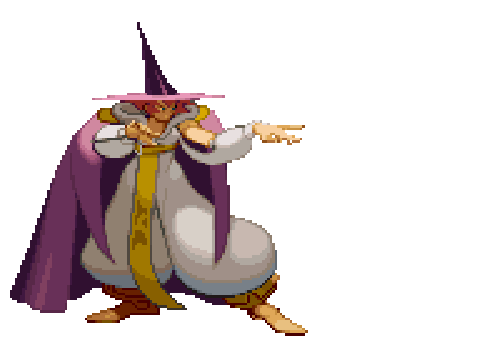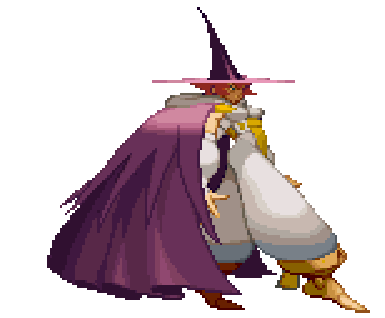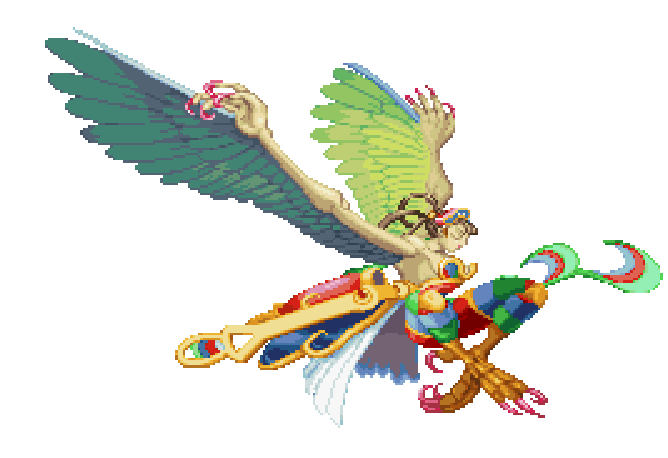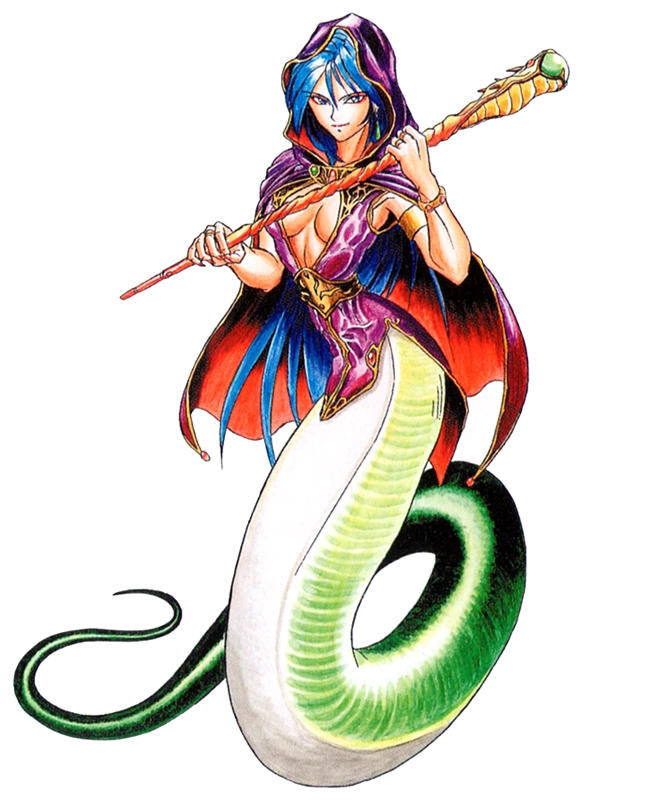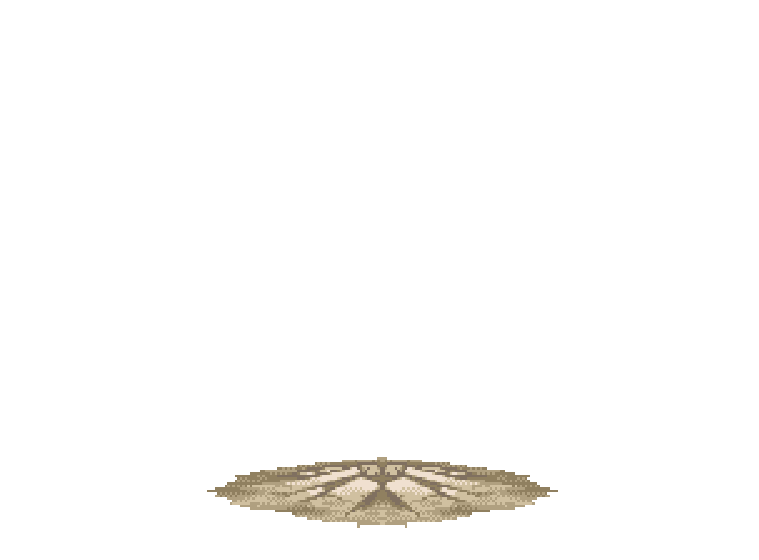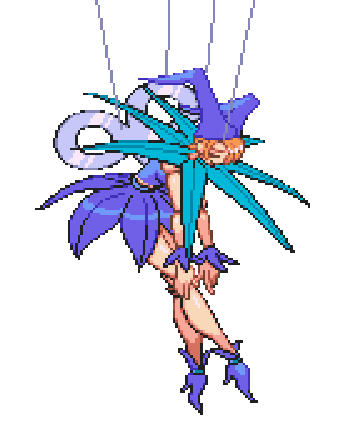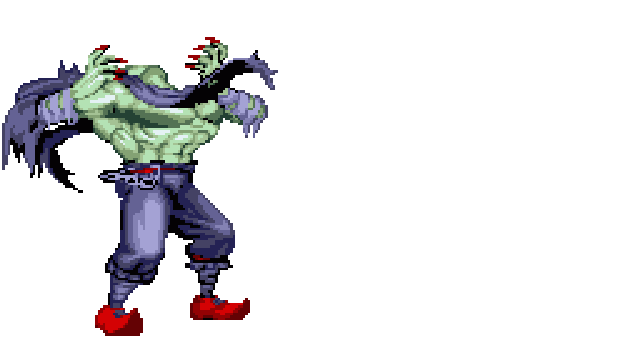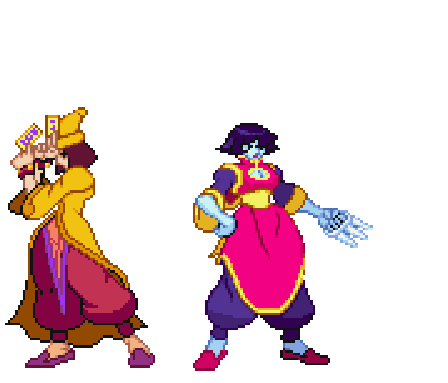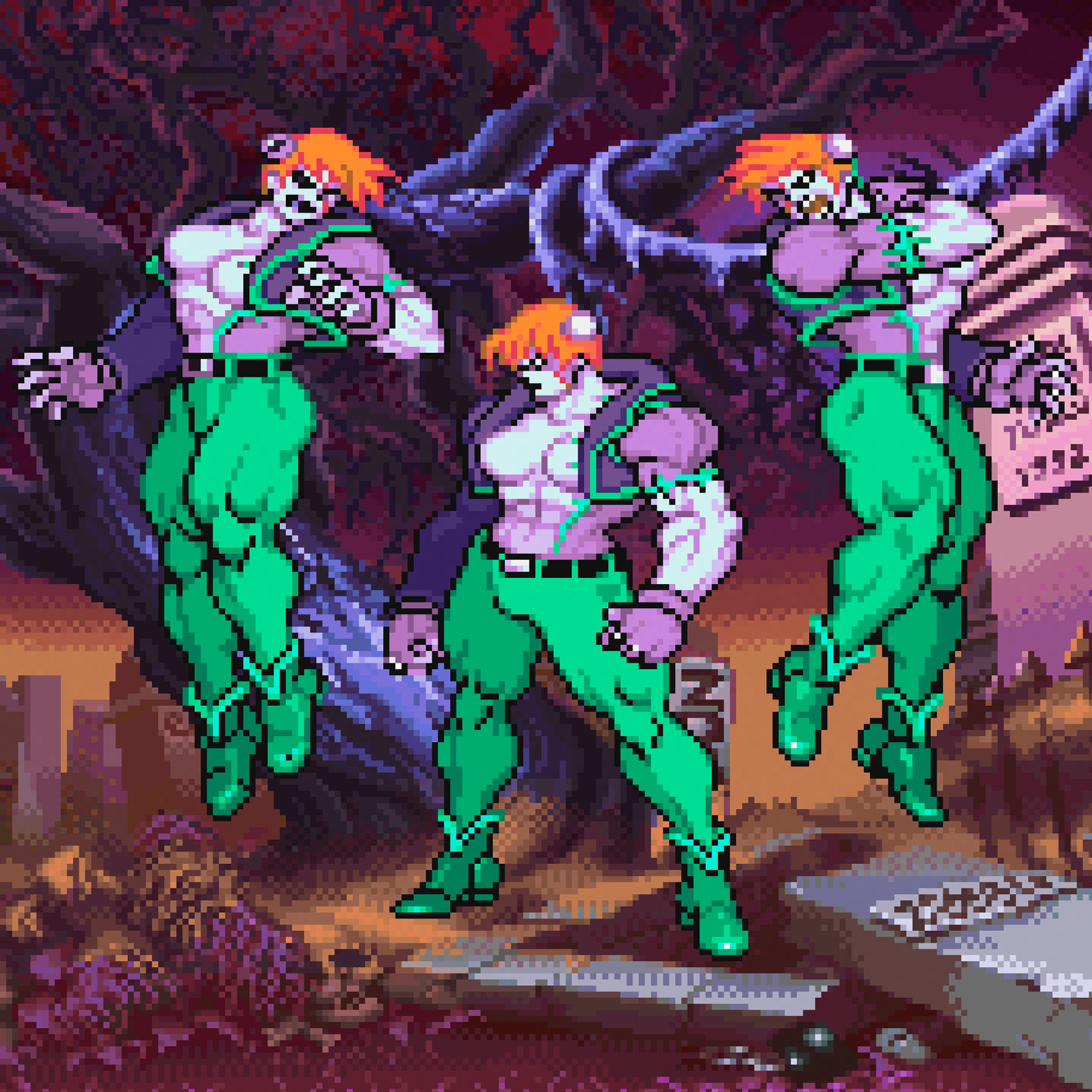The Extended Capcom Darkstalkers Universe
When I started this project earlier this year, people saw what I was doing and responded with something along the lines of “Oh, it’s a blog.” And every time I heard that word, I could tell that it struck me wrong.
Not that there’s anything wrong with blogs or blogging; after all, I’d actively kept a blog from 2003 to 2015 or so. And though I liked writing there, I felt like I wanted to differentiate what I’m doing now from what I did back then. At the time, my day job was at a newspaper, which meant writing what needed to be written and not what I wanted to write. Blogging, meanwhile, meant seizing the opportunity to write about anything and everything in whatever depth I was feeling. Back when I needed that release, it was liberating. This current project, however, is more focused. The plan, anyway, is to tell stories about how old video games came to be and to point out when the accepted stories may not be true.
Today, I’m making a bit of an exception. Knowing that Halloween was nearly upon us, I wanted to do something with my favorite Halloween-adjacent video game, Darkstalkers, the Capcom fighting series that plays like Street Fighter but weirder and sexier and also everyone is a monster. However, despite thinking about it for the better part of the month, I couldn’t come up with a single interesting way to explore its history in a way that other people haven’t already.
It certainly didn’t help that the video game podcast Retronauts did a great job discussing the series back in August.
Among the points brought up in that episode is that the series seems to be dead — or at least its classic era is, and any subsequent Darkstalkers games that might rise from the grave in the future would be something else entirely. The original three games — released in arcades in 1994, 1995 and 1997, respectively — represent a high point in animation in video games. Every frame of every character doing anything represents a level of detail we hadn’t seen before and largely have not since, especially with Capcom, whose flagship Street Fighter series abandoned high-quality pixel art after Street Fighter III: Third Strike, with Street Fighter IV and all subsequent installments using 3D-rendered character models.
Via The Fighters Generation, and please notice how Morrigan’s finger waggle ani ation is not only well-done but also something a character like her would do in between throwing fireballs.
This graphical change allows for technical advances that wouldn't be possible with characters in the hand-drawn style, but it’s also a different vibe — and as it turns out the vibe is very core to Darkstalkers and what made it special. If Capcom did revive this series, it seems likely that it would be done more in the style of whatever the current version of Street Fighter is out there. Saying that makes me sad, though there’s also some consolation in being able to pinpoint what it was about these games that worked so well.
Of course, even if there has not been a new Darkstalkers sequel since 1997, the characters have persisted. In 1998, Morrigan was the sole representative of the Darkstalkers series to be playable in Marvel vs. Capcom — which is notable considering that Demitri was the ostensible lead, but even then it was hard to ignore that the bouncing, bubbly succubus was the breakout character. But two years previous, Capcom also released Super Puzzle Fighter II Turbo, a head-to-head tile matching puzzle game featuring Ryu, Ken, Chun-Li, and Sakura from Street Fighter, but also Morrigan, Felicia, Donovan, and Hsien-Ko from Darkstalkers, which suggested that at least in the eyes of someone, at this point in time, the two series stood on nearly equal footing.
By the time Marvel vs. Capcom 2 hit arcades in 2000, Morrigan was joined by Felicia, Anakaris and B.B. Hood — and 2011’s Marvel vs. Capcom 3 featured the three most prominent female characters: Morrigan, Felicia and Hsien-Ko. The final (so far) installment reduced Darkstalkers alumni down to just Morrigan and Jedah, though it’s up to you whether to consider this a sign of Capcom’s diminishing regard for the series or Marvel vs. Capcom: Infinite being one we’re better off ignoring.
Because it is largely the crossover style of game in which the Darkstalkers have continued to exist, I have had in my head since the late 90s a roster of Capcom characters who are not Darkstalkers characters but who are dark enough and stalkery enough to stand alongside those glorious weirdos. And this post is going to be that list — which is to say this is a post that is more in line with the “whatever, anything goes” style of blogging than it does the more history-focused content I put up here. I think I’m allowed? And if I’m not, read on, endure my fandom and sniff out the little bits of history that I’ve packed away in here.
Arthur and Firebrand
Gameplay-wise, Darkstalkers is a twist on the basic Street Fighter setup, but its background lore puts it closer to the Ghosts n’ Goblins series, which stars Arthur as a plucky knight storming the underworld to rescue the princess. In Japan, the series is Makaimura (魔界村, or “Demon World Village”). Similarly, most of the backstory in Darkstalkers involves wrangling over control of Makai (魔界), the demon realm. The Ghosts n’ Goblins version and the Darkstalkers version are not necessarily the same place, as makai is a concept that exists in Japanese culture beyond Capcom video games. Its origins lie in Buddhism, where it can refer to a spiritual state opposite that of buddhahood. By metaphorical extension, it also came to mean any dimension inhabited by yokai, ghosts, and other supernatural beings. However, given that both series use versions of the concept that seemingly could interlock with each other, it’s surprising that neither Arthur nor the series most famous monster, Firebrand the gargoyle, ever showed up to tussle with the Darkstalkers.
Perhaps the age of crossovers came too late in the brief lifespan of Darkstalkers, because both Arthur and Firebrand did eventually become playable in Marvel vs. Capcom 3 in 2011.
Via The Fighters Generation, and this is not actually from Marvel vs. Capcom 3 but the first one, where he appears as an assist character. But you get the point.
And 2003’s SNK vs. Capcom: SVC Chaos has the Red Arremer, a character who is the generic gargoyle enemy from the Ghosts n’ Goblins series and Firebrand not the specific antihero character. (I explain the confusion in the miscellaneous notes section.) In this game, Red Arremer was the boss guarding the entrance to hell, whereas the SNK character Athena was the boss guarding the entrance to heaven. It’s lovely symmetry, really.
But yes, at the very least, Capcom has given thought to how both these characters would function in a fighting game already.
For what it’s worth, I’d also be down to see Darkstalkers reinvent one of the various Emperors of Makai, a hierarchy of demons who serve as bosses in these games — because they’re due do be Darkstalkerized, but also because Morrigan’s backstory seems to fit in with them especially well. These guys all have old school demon names like Astaroth and Azazel, and so does Morrigan’s adoptive father, Belial Aensland. In Darkstalkers lore, Belial is the ruler of Makai, and several playable characters want to wrestle control of the realm from him, Demitri foremost among them.
Via The Villains Wiki.
Ruby Heart and Amingo
A common complaint against Marvel vs. Capcom 2 is that the Capcom roster is stocked with three characters who were invented specifically for the title. That’s not exactly true, though these three are far from beloved, long-lived Capcom mascots. Ruby Heart, the female pirate who serves as the game’s protagonist, was initially conceived as a Darkstalkers character. You see a bit of this in her move set, which includes a special involving a ghost popping out of a treasure chest. I think she’s a fantastic character design, and really, the only thing holding Ruby back from full-fledged Darkstalker status is making her explicitly a ghost pirate.
A version of Ruby technically exists in the Street Fighter canon now; she’s a member of a family of pirates that also includes my no. 1 big burly boy Higemaru, who himself was considered as a potential playable character in Street Fighter V. But this is not Ruby Heart, the ghost pirate captain, and is instead a character just inspired by her. So there’s room yet for Ruby Heart to make her return.
Amingo is the second wholly new character in Marvel vs. Capcom 2, and I feel like he draws more ire because he’s got such a goofy design. But it is for this reason that I love him and also think he wouldn't be out of place among the goofier Darkstalkers characters, like Sasquatch.
Amingo is a member of a the race of man-plants (人植物 or hito-shokubutsu) that as far as I know have no prominence in any other Capcom game. Unlike Ruby Heart, it’s never been explicitly said that Amingo was a rejected Darkstalker design, but it sure seems like he probably was, especially because the series is lacking in a plant monster character.
Marvel vs. Capcom 2 also features the monkey girl SonSon, who is a new character but also one inspired by the 1984 Capcom platformer of the same name, which was in turn inspired by Journey to the West. I’ve got no objection to her one way or the other, but for whatever reason SonSon’s design doesn’t seem as compatible with the Darkstalkers games the way Ruby and Amingo’s are. Your mileage may vary, but I for one love my big happy cactus boy.
Tessa and Lavia
I was as stoked as anyone when Red Earth was included in this year’s Capcom Fighting Collection. It’s a fantasy-skewing one-on-one fighter that I had precious little time with back in the arcades, and I always wanted to explore it top-to-bottom because the character designs were done by artists who had also done the ones for Darkstalkers. Of the four playable heroes, the one who’d be most at home in a Darkstalkers game is clearly the sorceress Tessa, also known as タバサ, which gets rendered as Tabasa but I think would make more sense as Tabatha or Tabitha, though that might be because I think of that name as witchy because I grew up watching Bewitched.
She’s amazing. I mean, look at this runway stomp and tell me this is not a woman who belongs in the same game as Morrigan and Felicia.
Even though witches appear frequently in the folklore and pop culture that Darkstalkers is riffing on, the game lacks a witch-type character. That may well be because Darkstalkers insists on being weird to the point that it often bucks convention, but Tessa is already well-acquainted with the Darkstalkers crew. She is playable in 1997’s Super Gem Fighter Mini Mix, where she is the only one in the game hailing from a series other than Street Fighter or Darkstalkers. She’s also playable in SNK vs. Capcom: SVC Chaos, which provides a storyline explaining how she crosses from the Red Earth continuity and into this one. I’d love to see her cross into Darkstalkers.
Red Earth presents a whole host of monsters that also wouldn’t be out of place in Darkstalkers either. Hauzer the dinosaur and Hydron, a sea monster, both appear on the Red Earth team in the 2004 crossover game Capcom Fighting Evolution (which I always think of as Capcom vs. Capcom, and I can’t be the only one). But there’s also a Japanese-style ogre, an Incan-style golem, and an Egyptian-style chimera. Easily my favorite, however, is Lavia the harpy, because she’s simply stunning to behold. This is an exceptionally beautiful assemblage of pixels.
All the more so because a monster-type that Darkstalkers lacks is one that draws on Greek mythology, and she totally fills that role. Again, it seems like it would be obvious for a game like this to have a Medusa-inspired character. It just doesn’t, because it seems to insist on being weird and choosing characters you would’t expect, like a Grim Reaper dressed like a schoolboy or an Aztec-era robot.
Deis
It’s curious that none of Capcom’s crossover fighting games have ever tapped the rather deep well of Breath of Fire. If it ever did, I’d imagine a mainstay like Ryu or Nina would a more obvious pick, but I’d actually prefer Deis, the naga-like sorceress known as Bleu in the first two localizations.
Via Capcom Database.
Unlike Ryu and Nina, who are reinvented for every new sequel, Deis is always the same character from one continuity to another, inexplicably ageless and deathless. I think playing as Zelda in Smash Bros. made me learn to love how “glass cannon”-type characters can play interesting roles in fighting games, and Deis definitely would be that. Moreover, I’d just love to see her animated in the Darkstalkers style, tail and all.
One specific version of Jill Valentine
A good example of how important design and style are to me is the evolution underwent by Resident Evil heroine Jill Valentine. The version of her appearing in the last two Marvel vs. Capcom games is sleek, cool, and looking more like Natasha Romanoff or a suitless Samus Aran. Which is fine, but the version of her made for Marvel vs. Capcom 2 is just too perfect and too cute in her blue hat. Given special moves that allow her to summon zombies and other ghouls from her series, she visually reads just as “horror character,” whereas the later versions favor the Resident Evil’s sci-fi underpinnings.
So yes, Resident Evil is a horror franchise, and you’d think that would make it a natural fit for Darkstalkers, but in my personal opinion, only this version of Jill would make sense — as a sort of modern twist in the demon hunter type represented by Donovan and B.B. Hood.
Dante and Trish
I have not played the Devil May Cry games and only know about them through their representation in Marvel vs. Capcom 3 and Marvel vs. Capcom: Infinite, but it wouldn’t be too much of a strain to blend these continuities. Again, your mileage might vary as to how much of a value add this would be for the Darkstalkers canon.
Along similar lines, there’s also…
Gene
The 2006 title God Hand focuses on Gene, whose job is beating up demons. This seems like an easy enough thread to weave into the Darkstalkers story. Apparently Gene was considered for the roster in Marvel vs. Capcom 3, only to lose out to Amaterasu from Ōkami. Which I’m fine with. Actually, I wouldn’t be opposed to seeing Amaterasu herself in a Darkstalkers game, though either might be too far outside the sweet spot of classic monsters to make sense, even with a series that plays by its own rules as much as this one does.
Devilotte
On paper, it doesn’t work because Cyberbots is a one-on-one mech fighter. Devilotte isn’t a fighter. She’s just the pilot to a robot that fights for her. But then on the other hand, her full name is Princess Devilotte de Death Satan IX, and I think that tells me everything I need to know about her. The fact that one of her two attendants looks like a cross between Victor, the Frankenstein’s monster stand-in from Darkstalkers, and Nash, who kind of becomes a Frankenstein’s monster stand-in in the Street Fighter canon, is just the icing on the cake. (The icing and the cake are both poison, FWIW.)
Via Fighters Generation.
That’s it. That’s all I got for this one.
Marionette
The cheat here is Marionette is already a Darkstalkers character. She’s a sort of living doll that, in battle, simply takes the form of whatever opponent she’s fighting. She’s a doppelganger, effectively, who doesn’t actually have her own move set.
That’s too bad, because I think she’s a cool, weird design, and I’d always be down to see what Capcom could do with her if they fleshed her out with her own moveset. More evil fairy dolls in video games, I say.
The Wraith
And while it would be more typical of a post like this to end on a joke, this character from the bygone Capcom wrestling series Saturday Night Slam Masters has more of a legitimate tie to makai than you’d think. In the second game in the franchise — Ring of Destruction: Slam Masters II, known in Japan by the much better title Super Muscle Bomber: The International Blowout — four new wrestlers are introduced, including The Wraith, a hulking Indian fighter who worships the goddess Kali and who who appears to be less human than most characters in a Street Fighter-adjacent game. He has a human face beneath his cloak, but he also has snakes that can shoot out from where his face should be. He is… not well.
Via this Tumblr.
Even though Slam Masters exists squarely in the Street Fighter continuity — Mike Haggar is playable and Chun-Li, Zangief, and E. Honda make cameos — most write-ups on The Wraith note that he derives powers from his connection to Makai and that he makes Slam Masters the third Capcom entry to connect to this paranormal realm. So even though Black Widow is the character from Slam Masters II I think has the best design, this weirdo has more of a legit claim to the Darkstalkers legacy.
Hey — if Street Fighter is apparently never going to promote a Slam Masters character to its ranks, maybe a Darkstalkers game can?
Of course, I say all this fully realizing that loading a Darkstalkers game with guest characters would probably ruin the very specific mood this series has. If Capcom ever did put out a new entry in this franchise, I would want to see their original creations, because Darkstalkers has some of the best designs in any video game series ever. But I’m also saying all this knowing that it simply might never happen one way or the other, though I’d always remind Capcom that there’s a sizable fandom out there who would jump at the series’ return.
With that, I’ll end this foray into a more bloggy style of blogging. I’ll wish you all a happy Halloween. And I’ll be back with a more solidly history-focused post soon enough.
Miscellaneous Notes
I mentioned that it’s in the Smash Bros.-style crossover games in which Darkstalkers characters are still allowed to show up, but certainly it has occurred to you that more and more things are done in this style of “screw continuity, here’s some fan service.” That’s why we have a game where Velma from Scooby-Doo can beat up Batman, for example. What would you say is the turning point that caused pop culture to move in this direction? Certainly it’s not actually Smash Bros., which came out in 1999, a year after the first Marvel vs. Capcom. But then again, Marvel vs. Capcom was just a natural continuation of what began in 1996 with X-Men vs. Street Fighter. Hmm…
The confusion about Firebrand and Red Arremer works not unlike Yoshi and Pikachu, wherein these characters are usually seen as the most famous member of their species despite also being the most generic version of their species. There are the Yoshis, in general, and then there is Yoshi, Mario’s special pal, but Yoshi is also the default version of all Yoshis, and there’s not much to differentiate him from any other green Yoshi. It’s a take on individualism and group identity that sometimes seems at odds from Western and especially American philosophies.
In Japan, Red Arremer is both the generic enemy and the specific character who got his own series of spinoff games beginning with the 1990 Game Boy title Gargoyle’s Quest (レッドアリーマー 魔界村外伝, or “Red Arremer: Makaimura Gaiden”). Only outside Japan was this character named Firebrand and given a unique identity in that Firebrand is a Red Arremer, yet not all Red Arremers are Firebrand. This is complicated further by the fact that there are also multiple versions of this enemy, though not in the way the name would imply; there isn’t a Blue Arremer or a Purple Arremer, though there is a white one. Most other versions are wearing different levels of armor and given playing card designations. It’s really weird.
In the English instruction manual for the NES port of Ghosts n’ Goblins, the character is simply named Red Devil, though some localizations would mistranslate the character name as Red Reamer, which is hilarious. According to this interview, the name Red Arremer (レッドアリーマー, or Reddo Arīmā) was chosen either in honor of or in mockery of a Capcom staffer. As Tokuro Fujiwara, producer of the Super NES spinoff Demon’s Crest explains,
More generally, we knew we wanted to make a game that really put monsters, ghosts, and demons in the spotlight — hence the Makaimura title, of course. That’s how we first came up with Red Arremer, by trying to think specifically of a “demon” type character. When it came time to name that character, something about him reminded us of one of our employees [programmer Toshio Arima], so we chose a similar-sounding name.
You have to wonder how Toshio Arima feels about it.
I really did try for a Darkstalkers-focused follow-up to my post on the origin of Street Fighter character names, but the fact of the matter is most of them either get their names from very obvious sources — Victor being a nod to Victor Frankenstein, Felicia being named most likely because it sounds like feline — or they’re so obscure I couldn’t come up with anything. I have no clue where Anakris’ name comes from, for example. One bit of name origin trivia that I can offer is that Rikuo, the sexy merman known in Japan as Aulbath, is likely named after Ricou Browning, the actor who played the title monster in the movie Creature from the Black Lagoon. And that makes a lot of sense, because most of the original Darkstalkers line-up corresponds to characters from Universal horror films specifically. For example, Jon Talbain, the werewolf character, is presumably a play on the Jon Talbot, the character Lon Chaney Jr. plays in The Wolf Man. In-jokes like these remind me of the joke credits at the end of Castlevania.
I’m a little more curious where the Japanese name, Aulbath, might come from. The Retronauts podcast mentions that Capcom named the characters with international appeal in mind, yet many characters also have alternate names in Japan. For example, Jon Talbain is Gallon, and while I’m not sure why, I presume it has something to do with the fact that the Japanese rendering that name, ガロン or Garon, is a play on garou, the French word for “werewolf.” I’ve got nothing on why the Japanese name for Lord Raptor, the Australian rock-n-roll zombie, is Zabel Zarock. Do you?
Hsien-Ko, the cutest jiāngshī in video games, is known in Japan as Lei-Lei, and I actually prefer this name for her. According to this interview, the Japanese version of the name comes from 霊, rei or “soul,” and there is some nice symbolism in this character containing the souls of two girls in one body and reflecting that by doubling that word. She’s literally two souls. I couldn’t find an explanation for where the name Hsien-Ko came from. I’m open to any theories for any of the not-so-obvious etymologies should you have any.
B.B. Hood, the ultraviolent take on Little Red Riding Hood that I can’t help but read as a prediction of underage spree shooters, is known in Japan as バレッタ, usually rendered as Bulleta. However, バレッタ could also be Baretta, which always reminded me of Beretta, the Italian gun maker. Coincidental or not, it’s interesting that the name could have both associations, bullet and gun, both being equally appropriate for this character who wants to shoot everyone.
There is an extremely minor, unseen character in the Darkstalkers universe who is credited as being the person who translated the language of Q-Bee’s race of demonic bee women. This person’s name is Varvle Mattlayer, and I have no idea why this character exists nor why he was given this strange name. If you know, please tell me. It’s such a weird footnote in an already weird series — and for what it’s worth, Varvle’s approximation of the Soul Bees’ language into English language is still basically unreadable.
Given that Morrigan was clearly the fan favorite, it may be surprising that SNK vs. Capcom: SVC Chaos features Demitri as the Darkstalkers representative. Why would this be? The answer, I think, is that Demitri being playable means all the characters need to have a model for Midnight Bliss, his special move of his that turns male characters into female characters and female characters into cuter, sexier versions of their regular selves so he can suck their blood. The compilation for this game is a sight to behold. The cutest transformation of all? I say Firebrand.
Demitri also gets a spot in Capcom Fighting Evolution, I presume for similar reasons. And yeah, the supercut of Midnight Bliss transformations from that game is also pretty rad.
And yes, Midnight Bliss might just be the most Halloween-y thing about Darkstalkers. And that’s saying a lot.


